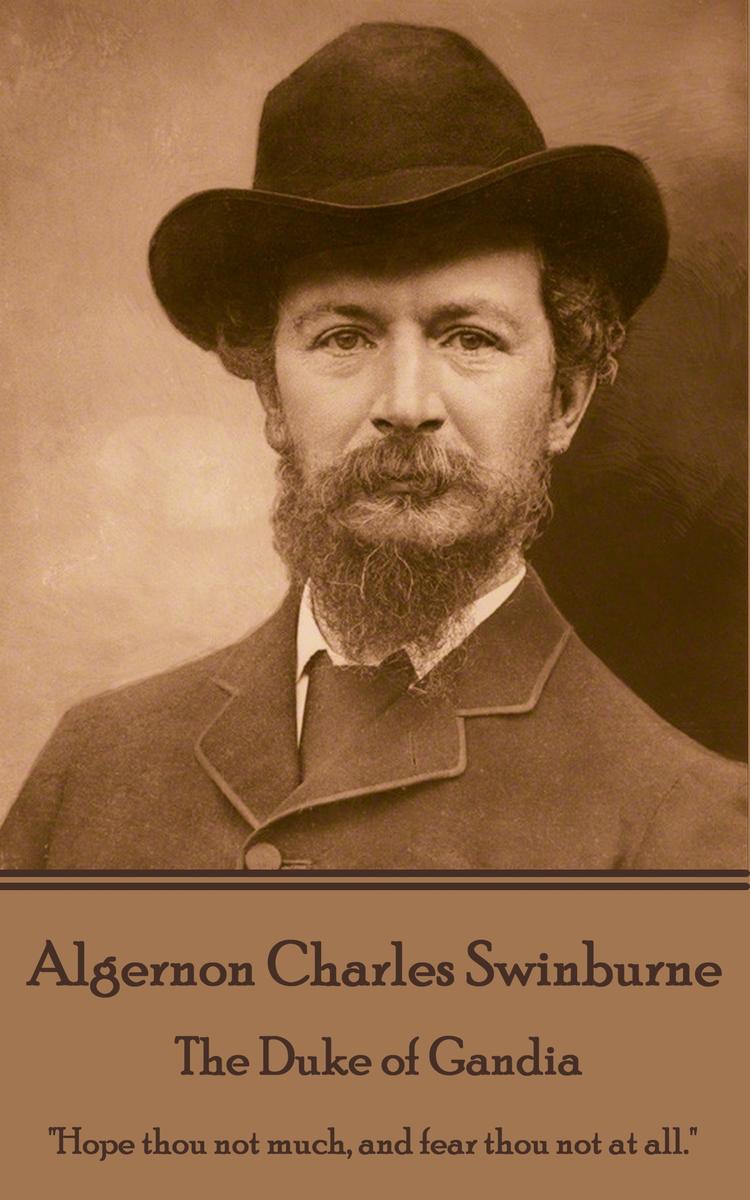
Duke of Gandia - Hope thou not much, and fear thou not at all.
¥14.03
Algernon Charles Swinburne was born on April 5th, 1837, in London, into a wealthy Northumbrian family. He was educated at Eton and at Balliol College, Oxford, but did not complete a degree. In 1860 Swinburne published two verse dramas but achieved his first literary success in 1865 with Atalanta in Calydon, written in the form of classical Greek tragedy. The following year "e;Poems and Ballads"e; brought him instant notoriety. He was now identified with "e;indecent"e; themes and the precept of art for art's sake. Although he produced much after this success in general his popularity and critical reputation declined. The most important qualities of Swinburne's work are an intense lyricism, his intricately extended and evocative imagery, metrical virtuosity, rich use of assonance and alliteration, and bold, complex rhythms. Swinburne's physical appearance was small, frail, and plagued by several other oddities of physique and temperament. Throughout the 1860s and 1870s he drank excessively and was prone to accidents that often left him bruised, bloody, or unconscious. Until his forties he suffered intermittent physical collapses that necessitated removal to his parents' home while he recovered. Throughout his career Swinburne also published literary criticism of great worth. His deep knowledge of world literatures contributed to a critical style rich in quotation, allusion, and comparison. He is particularly noted for discerning studies of Elizabethan dramatists and of many English and French poets and novelists. As well he was a noted essayist and wrote two novels. In 1879, Swinburne's friend and literary agent, Theodore Watts-Dunton, intervened during a time when Swinburne was dangerously ill. Watts-Dunton isolated Swinburne at a suburban home in Putney and gradually weaned him from alcohol, former companions and many other habits as well. Much of his poetry in this period may be inferior but some individual poems are exceptional; "e;By the North Sea,"e; "e;Evening on the Broads,"e; "e;A Nympholept,"e; "e;The Lake of Gaube,"e; and "e;Neap-Tide."e; Swinburne lived another thirty years with Watts-Dunton. He denied Swinburne's friends access to him, controlled the poet's money, and restricted his activities. It is often quoted that 'he saved the man but killed the poet'. Algernon Charles Swinburne died on April 10th, 1909 at the age of seventy-two.

Me and Earl and the Dying Girl
¥81.23
New York Times Bestseller The book that inspired the hit film! Sundance U.S. Dramatic Audience Award Sundance Grand Jury Prize This is the funniest book you'll ever read about death. It is a universally acknowledged truth that high school sucks. But on the first day of his senior year, Greg Gaines thinks he's figured it out. The answer to the basic existential question: How is it possible to exist in a place that sucks so bad? His strategy: remain at the periphery at all times. Keep an insanely low profile. Make mediocre films with the one person who is even sort of his friend, Earl. This plan works for exactly eight hours. Then Greg's mom forces him to become friends with a girl who has cancer. This brings about the destruction of Greg's entire life.Praise for Me and Earl and the Dying GirlSTARRED REVIEW "e;One need only look at the chapter titles ("e;Let's Just Get This Embarrassing Chapter Out of the Way"e;) to know that this is one funny book."e; -Booklist, starred reviewSTARRED REVIEW "e;A frequently hysterical confessional...Debut novelist Andrews succeeds brilliantly in painting a portrait of a kid whose responses to emotional duress are entirely believable and sympathetic, however fiercely he professes his essential crappiness as a human being. Though this novel begs inevitable thematic comparisons to John Green's The Fault in Our Stars (2011), it stands on its own in inventiveness, humor and heart."e; -Kirkus Reviews, starred review "e;It is sure to be popular with many boys, including reluctant readers, and will not require much selling on the part of the librarian."e; -VOYA "e;Mr. Andrews' often hilarious teen dialogue is utterly convincing, and his characters are compelling. Greg's random sense of humor, terrible self-esteem and general lack of self-awareness all ring true. Like many YA authors, Mr. Andrews blends humor and pathos with true skill, but he steers clear of tricky resolutions and overt life lessons, favoring incremental understanding and growth."e; -Pittsburgh Post-GazetteAwards: Capitol Choices 2013 - Noteworthy Titles for Children and Teens Cooperative Children's Book Center (CCBC) Choices 2013 list - Young Adult Fiction YALSA 2013 Quick Picks for Reluctant Young Adult Readers YALSA 2013 Best Fiction for Young Adults YALSA 2014 Popular Paperbacks for Young Adults

Where The Black and Grey Wolves Kiss: Book Two: The Sabienn Feel Adventures
¥26.07
In his quest to seek the mysterious missing stone, the occult item sought to ensure victory in war, Sabienn Feel journeys with his three companions to the island of Cajj Cajj. The island is to be invaded as a result of an event that has yet to occur and is currently being held by the Turrs, a people Sabienn has always been at variance with.In his endeavours, he needs to work closely with these people for his mission to succeed. He knows he dislikes the Turrs. But is he capable of falling in love with one? Where The Black and Grey Wolves Kiss is the second of twelve books in the Sabienn Feel Adventures.Interview with the AuthorQ - What inspired you to write The Sabienn Feel Adventures?A – I’ve always loved the idea of the epic journey. I’m acquainted with the book Journey to the West but was more familiar with the TV series in the 80’s based on the book called Monkey. The idea of four souls travelling across a wide expanse of geography to complete a quest appealed to me. So I planned a series of twelve books to go from one place in the south of this space colony that they live on twice removed from Earth, to end up in the north, meeting danger at every turn. Q – Why does your main character Sabienn Feel grow wings?A - Good question. I wanted something very drastic to occur to these people physically. Something that would be difficult to hide and offer an immediate prejudice. The idea of growing wings constantly came up for me. There’s a Pearl Jam song I found inspiring that says, “And sometimes is seen a strange spot in the sky. A human being that was given to fly”. And in my mind’s eye, I could see this figure. Almost like the Led Zeppelin Icarus logo but with bat wings. But they couldn’t fly otherwise they’d hit the sky and the journey would be over in no time. I made them only able to swim because being submerged in water has elements of dealing with the subconscious. To me it satisfies all elements of those prophecy, fantasy, epic adventure type of stories that involve friendship and brotherhood. Q - So, why should readers give these books a try?A – Well I would say they were humour-filled, page-turning, epic, fantasy adventure novels which involve a quest. But then that’s what you would expect me to say. Why not try and read one of the books and let me know what you think? Some of the books are free so you’ve got nothing to lose.Sorry if that sounded a little flippant. I’m immensely grateful that anyone is reading my books. And hopefully I can make them the best stories possible for my magnificent readers.
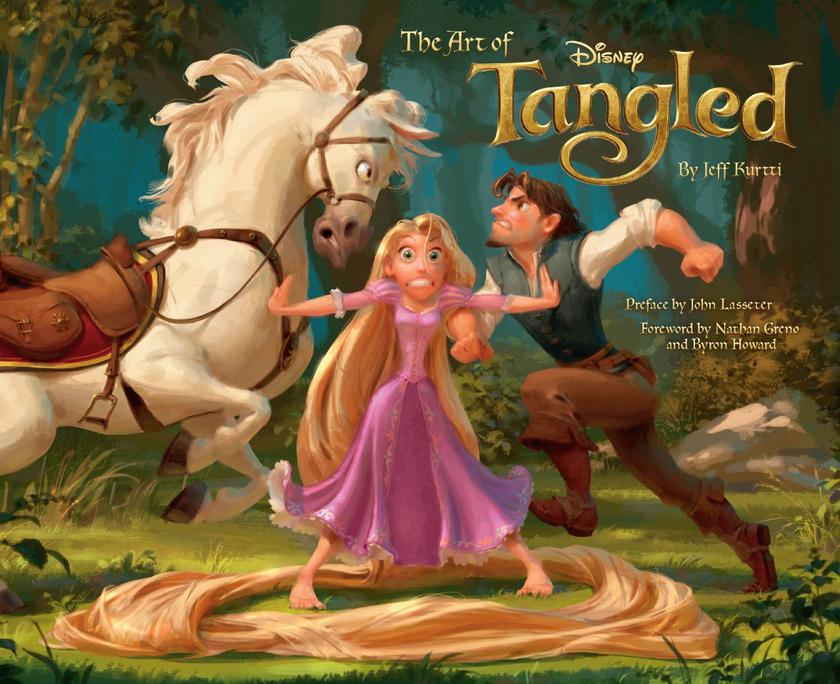
Art of Tangled
¥305.97
A lighthearted twist on Rapunzel, the beloved fairy tale from the Brothers Grimm, Tangled brims with thrilling adventure, a distinctive cast of characters, a daring heroine, and, of course, seventy feet of golden hair. Featuring the stunning concept art behind the newest Disney masterpiece, The Art of Tangled also includes a preface by John Lasseter, a foreword by Directors Nathan Greno and Byron Howard, and interviews with the artists, animators, and production team—including Art Director David Goetz—that shed light on the history and artistry of this landmark film.

Art of Moana
¥305.97
The Art of Moana is the latest title in our exceptional series showcasing artwork from the creation of Walt Disney Animations' latest releases. Three thousand years ago, the greatest sailors in the world ventured across the Pacific, discovering the many islands of Oceania. But then, for a millennium, their voyages stoppedand no one today knows why. From Walt Disney Animation Studios, Moana is a CG-animated adventure about a spirited teenager who sails out on a daring mission to prove herself a master wayfinder and fulfill her ancestors' unfinished quest. During her journey, Moana meets the once-mighty demi-god Maui and together they traverse the open ocean on an action-packed adventure, encountering enormous fiery creatures and impossible odds. The stunning artwork in this behind-the-scenes book includes character designs, storyboards, colorscripts, and much more.Copyright 2016 Disney Enterprises, Inc. All Rights Reserved

Art of Toy Story 3
¥305.97
Disney/Pixar's Toy Story 3 takes viewers back to the story that started it all. Woody, Buzz, Jessie, Mr. and Mrs. Potato Head, Rex, Slinky Dog, and Hammalongside a surprising cast of new toysreturn to the big screen for a comical new adventure in Disney Digital 3D. In The Art of Toy Story 3 internationally renowned animation historian Charles Solomon takes readers through the technical challenges, triumphs, and emotional hurdles that faced the Pixar team as they developed the toys' adventure. The Art of Toy Story 3 includes an extended introduction showcasing the story and visual development behind the first two films, as well as a gallery of over 250 pieces of concept art. Featuring storyboards, character studies, color keys, reference photos, environment art, and a special color scripts by art director Daisuke Tsutsumi, this ebook provides a memorable narrative of the entire Toy Story trilogy.

Art of Coco
¥282.43
Pixar is proud to introduce the must-have companion to the vibrant new feature film Coco. The creation of Coco's mesmerizing world is explored in detail through colorful artwork, energetic character sketches, intriguing storyboards, and spellbinding colorscripts. Featuring insights from the production team about the making of the film and production art that bursts off the page, The Art of Coco overflows with insights into the creative process behind Pixar's unique and engaging vision.Copyright 2017 Disney Enterprises, Inc. and Pixar. All rights reserved.

Inside HBO's Game of Thrones - Seasons 3 & 4
¥353.06
Each episode of HBO's Game of Thrones draws millions of obsessed viewers who revel in the shocking plot twists, award-winning performances, and gorgeously rendered fantasy world. This official companion book reveals what it takes to translate George R. R. Martin's bestselling series into a wildly popular television series. With unprecedented scope and depth, it showcases hundreds of unpublished set photos, visual effects art, and production and costume designs, plus insights from key actors and crew members that capture the best scripted and unscripted moments from Seasons 3 and 4. Required reading for the die-hard fan, and the perfect way to catch up on the series before the much-anticipated Season 5 debuts, this special volume offers an exclusive window into cable's highest-rated show.2014 Home Box Office, Inc. All rights reserved. Game of Thrones and related trademarks are the property of Home Box Office, Inc.

Art of Sanjay's Super Team
¥200.03
In the new short film from Pixar Animation Studios, Sanjay's Super Team, accomplished artist Sanjay Patel uses his own experience to tell the story of a young, 1st generation Indian boy whose love for western pop culture comes into conflict with his father's traditions. This art-filled peek behind the curtain of this groundbreaking film is sure to excite Sanjay's legion of fans, and thrill animation lovers around the world.Copyright 2015 Disney Enterprises, Inc. and Pixar. All rights reserved.

Imagination Illustrated - The Jim Henson Journal
¥200.03
Jim Henson's iconic puppet characters, fantastic worlds, and warm humor have delighted millions of people of all ages. His incredibly diverse body of work, from the Muppets to the world of The Dark Crystal, reveals his charm and genius to fans old and new. Compiled directly from The Jim Henson Company archives, Imagination Illustrated adapts the diary that Jim faithfully kept throughout his career, supplementing it with a trove of little-seen visual material, including rare sketches, personal and production photographs, storyboards, doodles, and much more. Throughout, archivist Karen Falk delves into the behind-the-scenes details of Henson's life and artistic process. Sure to delight anyone who has enjoyed Henson's creationsseeing early drawings of Kermit and Rowlf is like smiling over childhood photos of dear friendsthis lovely book celebrates Jim's life and his magic.
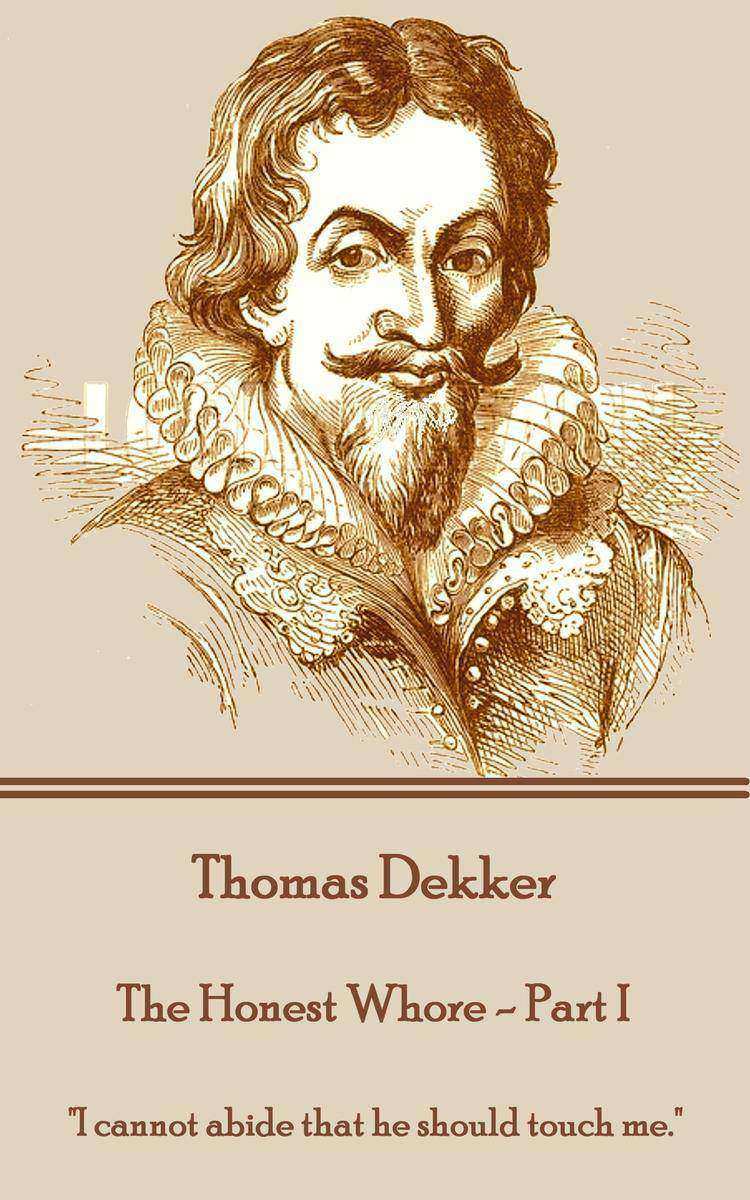
Honest Whore - Part I - I cannot abide that he should touch me.
¥26.98
Thomas Dekker was a playwright, pamphleteer and poet who, perhaps, deserves greater recognition than he has so far gained. Despite the fact only perhaps twenty of his plays were published, and fewer still survive, he was far more prolific than that. Born around 1572 his peak years were the mid 1590's to the 1620's - seven of which he spent in a debtor's prison. His works span the late Elizabethan and Caroline eras and his numerous collaborations with Ford, Middleton, Webster and Jonson say much about his work. His pamphlets detail much of the life in these times, times of great change, of plague and of course that great capital city London a swirling mass of people, power, intrigue.
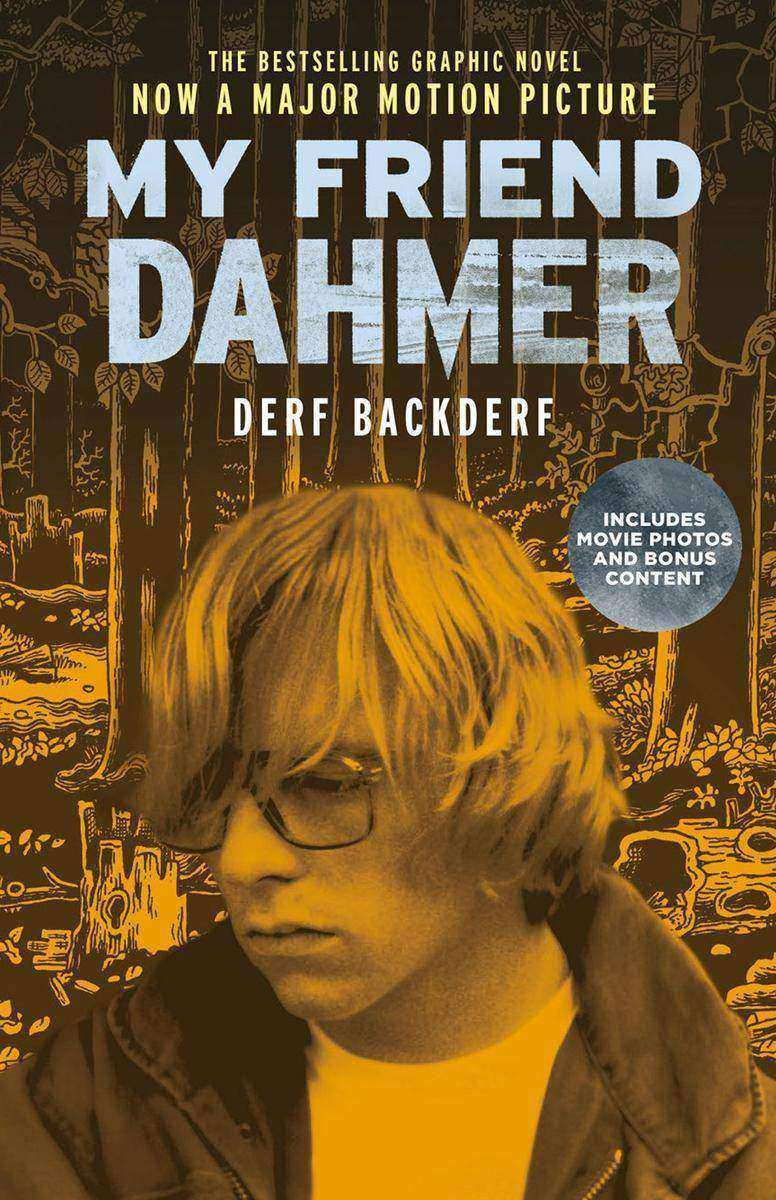
My Friend Dahmer (Movie Tie-In Edition)
¥163.04
"e;A well-told, powerful story. Backderf is quite skilled in using comics to tell this tale of a truly weird and sinister 1970s adolescent world."e; -R. Crumb NATIONAL BESTSELLER Named a BEST OF 2012 by Time, The Village Voice, A.V. Club, comiXology, Boing Boing, Publishers Weekly, MTV Geek, and more! "e;ASTOUNDING."e; -Lev Grossman, Time You only think you know this story. In 1991, Jeffrey Dahmer-the most notorious serial killer since Jack the Ripper-seared himself into the American consciousness. To the public, Dahmer was a monster who committed unthinkable atrocities. To Derf Backderf, Dahmer was a much more complex figure: a high school friend with whom he had shared classrooms, hallways, and car rides. In My Friend Dahmer, a haunting and original graphic novel, writer-artist Backderf creates a surprisingly sympathetic portrait of a disturbed young man struggling against the morbid urges emanating from the deep recesses of his psyche-a shy kid, a teenage alcoholic, and a goofball who never quite fit in with his classmates. With profound insight, what emerges is a Jeffrey Dahmer that few ever really knew, and readers will never forget. This new paperback edition will coincide with the release of the movie adaptation of My Friend Dahmer and will include additional bonus content from the author archives.
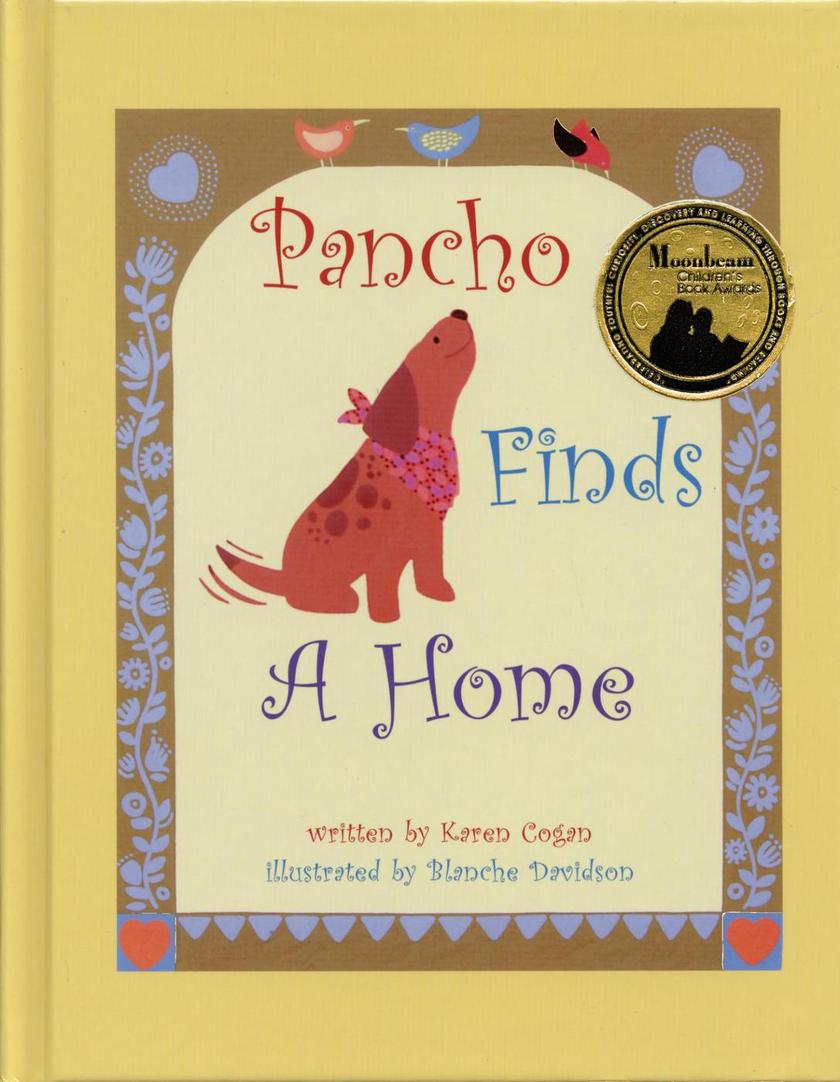
Pancho Finds A Home
¥8.63
Pancho Finds A Home is about a little dog who wanders into a small Mexican village that is preparing for a feast. He befriends a burro, hen and goat and prepares a special surprise for them.

Third Wheel (Diary of a Wimpy Kid #7)
¥158.82
Greg Heffley is not willing to be the odd man out.A dance at Greg's middle school has everyone scrambling to find a partner, and Greg is determined not to be left by the wayside. So he concocts a desperate plan to find someone—anyone!—to go with on the big night.But Greg's schemes go hilariously awry, and his only option is to attend the dance with his best friend, Rowley Jefferson, and a female classmate as a "group of friends." But the night is long, and anything can happen along the way. Who will arrive at the dance triumphantly, and who will end up being the third wheel?

Comedy Of Errors
¥17.56
William Shakespeare was born in Stratford-upon-Avon in late April 1565 and baptised there on 26th April. He was one of eight children. Little is known about his life but what is evident is the enormous contribution he has made to world literature. His writing was progressive, magnificent in scope and breathtaking in execution. His plays and sonnets helped enable the English language to speak with a voice unmatched by any other. William Shakespeare died on April 23rd 1616, survived by his wife and two daughters. He was buried two days after his death in the chancel of the Holy Trinity Church. The epitaph on the slab which covers his grave includes the following passage, Good friend, for Jesus's sake forbear, To dig the dust enclosed here. Blessed me the man that spares these stones, And cursed be he that moves my bones. Here we publish from 1589 the classic 'The Comedy Of Errors'.

Land of Heart's Desire - 'When but the moons of marriage dawn and die''
¥14.03
William Butler Yeats (1865 - 1939) is best described as Ireland's national poet in addition to being one of the major twentieth-century literary figures of the English tongue. To many literary critics, Yeats represents the 'Romantic poet of modernism,' which is quite revealing about his extraordinary style that combines between the outward emphasis on the expression of emotions and the extensive use of symbolism, imagery and allusions. Yeats also wrote prose and drama and established himself as the spokesman of the Irish cause. His fame was greatly boosted mainly after he received the Nobel Prize in Literature in 1923. His life was marked by his many love stories, by his great interest in oriental mysticism and occultism as well as by political engagement since he served as an Irish senator for two terms. Today, although William Butler Yeats's contribution to literary modernism and to Irish nationalism remains incontestable.

Through The Looking Glass - An Original Classic (Mermaids Classics)
¥11.67
Through the Looking Glass (also known as What Alice Found There) by Lewis Carroll - aka Charles Lutwidge Dodgson (1832 1898) is an 1871 childrens fantasy novel which is also the sequel to Alices Adventures in Wonderland (also known as Alice in Wonderland).Mermaids Classics, an imprint of Mermaids Publishing brings the very best of classic literature to a modern era of digital reading.
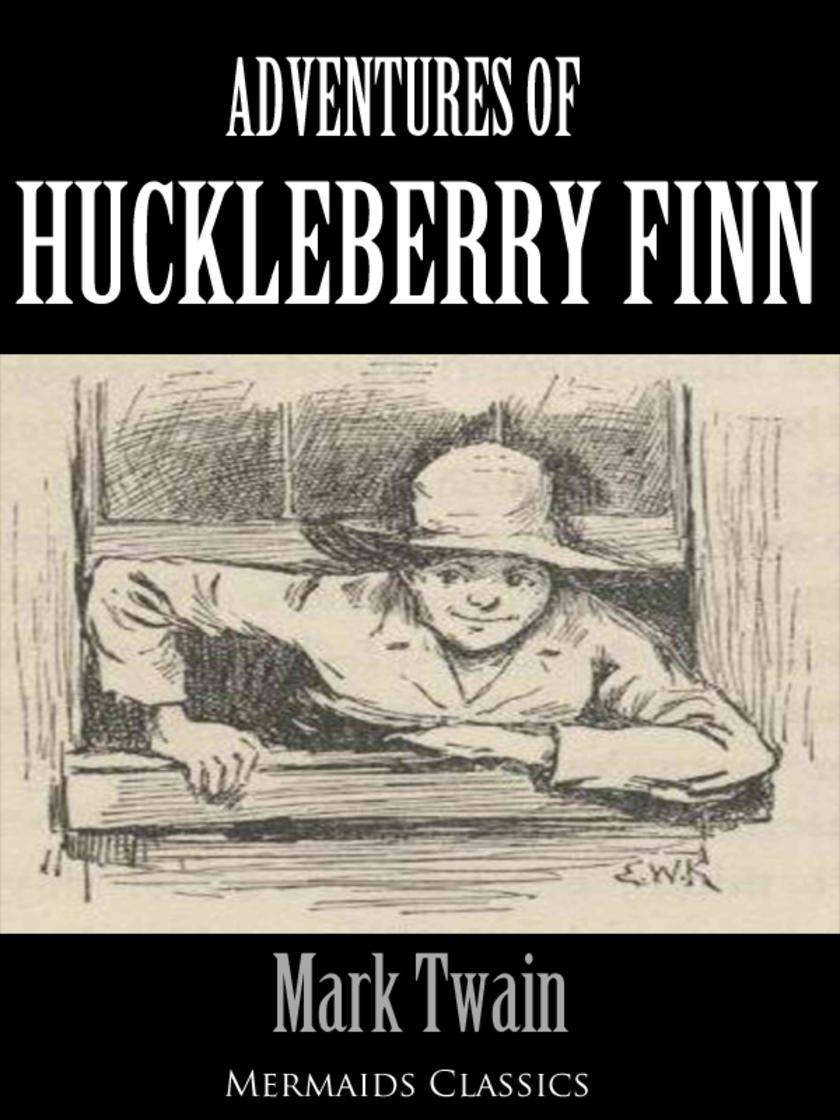
Adventures of Huckleberry Finn - An Original Classic (Mermaids Classics)
¥35.22
Adventures of Huckleberry Finn by Mark Twain (aka Samuel Langhorne Clemens) (1835 1910) is a childrens novel based on a young teenage boy called Huckleberry Finn who is raised by an alcoholic father and has difficulties in socialising with society. It was first published in 1884. This book is also the sequel to the book called The Adventures of Tom Sawyer.Mermaids Classics, an imprint of Mermaids Publishing brings the very best of old book classics to a modern era of digital reading by producing high quality books in ebook format.

Tale of Two Cities (Mermaids Classics)
¥35.22
A Tale of Two Cities (1859) by Charles Dickens (1812-1870) is a novel set during the French Revolution. With well over 200 million copies sold, it ranks among the most famous works in the history of fictional literature. The novel depicts the plight of the French peasantry demoralized by the French aristocracy in the years leading up to the revolution, the corresponding brutality demonstrated by the revolutionaries toward the former aristocrats in the early years of the revolution, and many unflattering social parallels with life in London during the same time period. (Citation from Wikipedia: The free Encyclopaedia)Mermaids Classics, an imprint of Mermaids Publishing brings the very best of old classic literature to a modern era of digital reading by producing high quality books in ebook format. All of the Mermaids Classics epublications are reproductions of classic antique books that were originally published in print format, mostly over a century ago and are now republished in digital format as ebooks. Begin to build your collection of digital books by looking for more literary gems from Mermaids Classics.

Love's Pilgrimage - No ground but this to argue on? no swords left Nor friends t
¥38.75
The English dramatists Francis Beaumont and John Fletcher, collaborated in their writing during the reign of James I of England (James VI of Scotland, 1567-1625; in England he reigned from 1603).Beaumont & Fletcher began to collaborate as writers soon after they met. After notable failures of their solo works their first joint effort, Philaster, was a success and tragicomedy was the genre they explored and built upon. There would be many further successes to follow.There is an account that at the time the two men shared everything. They lived together in a house on the Bankside in Southwark, "e;they also lived together in Bankside, sharing clothes and having one wench in the house between them."e; Or as another account puts it "e;sharing everything in the closest intimacy."e;Whatever the truth of this they were now recognised as perhaps the best writing team of their generation, so much so, that their joint names was applied to all the works in which either, or both, had a pen including those with Philip Massinger, James Shirley and Nathan Field.The first Beaumont and Fletcher folio of 1647 contained 35 plays; 53 plays were included in the second folio in 1679. Other works bring the total plays in the canon to about 55. However there appears here to have been some duplicity on the account of the publishers who seemed to attribute so many to the team. It is now thought that the work between solely by Beaumont and Fletcher amounts to approximately 15 plays, though of course further works by them were re-worked by others and the originals lost.After Beaumont's early death in 1616 Fletcher continued to write and, at his height was, by many standards, the equal of Shakespeare in popularity until his own death in 1625.
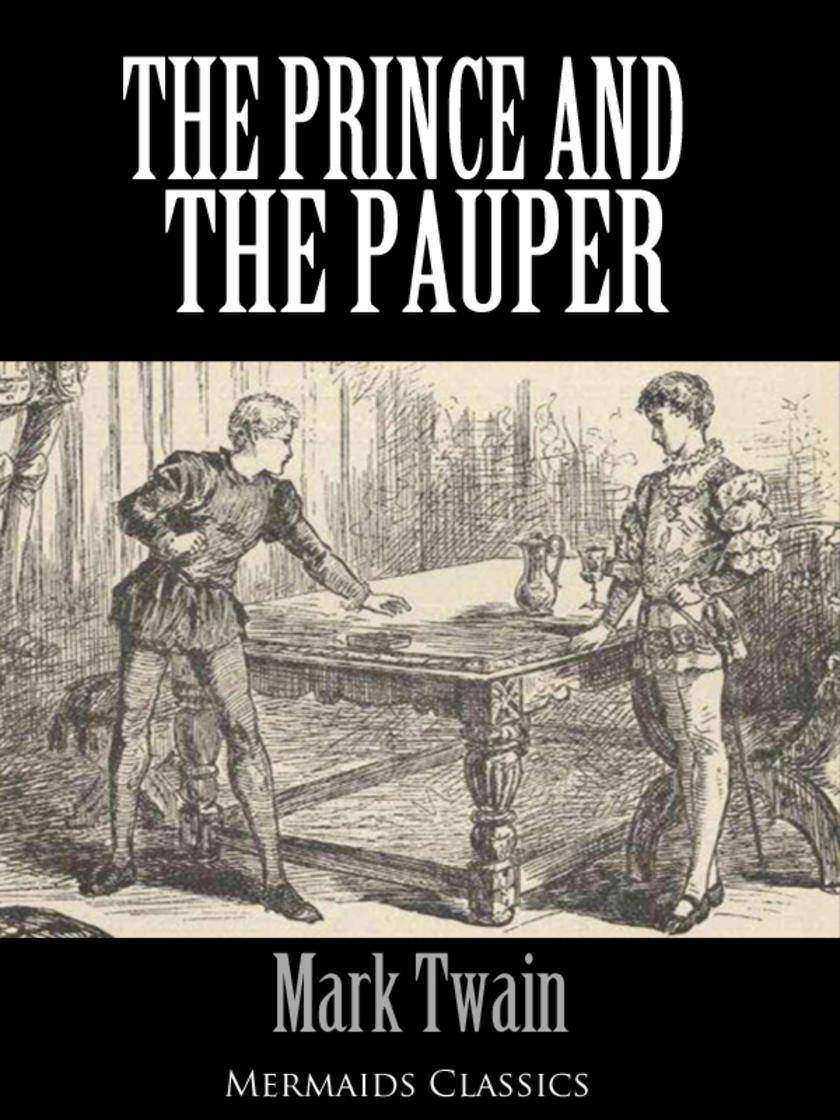
Prince and the Pauper - An Original Classic (Mermaids Classics)
¥35.22
The Prince and the Pauper by Mark Twain (aka Samuel Langhorne Clemens) (1835 1910) is a childrens novel based on two young boys who have an identical appearance but lead completely different lifestyles. One boy is a pauper named Tom Cancy and the other boy is a Prince - named Prince Edward. The story is set in 1547.The Prince and the Pauper was first published in 1881. Mermaids Classics, an imprint of Mermaids Publishing brings the very best of old book classics to a modern era of digital reading by producing high quality books in ebook format.




 购物车
购物车 个人中心
个人中心



